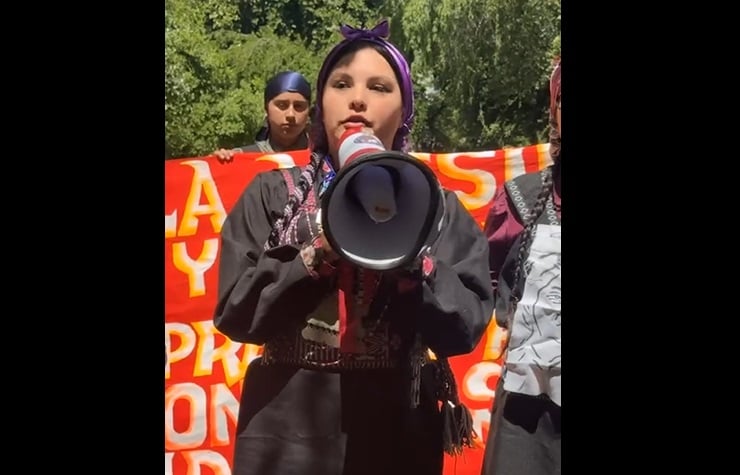Hong Kong issues guide for reporting suspected child abuse. The Post takes a look – South China Morning Post

Report on Hong Kong’s Mandatory Child Abuse Reporting Ordinance and its Alignment with Sustainable Development Goals
1. Overview of the Legislative Initiative
Hong Kong’s welfare authorities have issued a practical guide for a new ordinance concerning the mandatory reporting of child abuse, scheduled to take effect on January 20, 2026. This legislative measure is a significant step towards strengthening institutional frameworks to protect children, directly addressing key targets within the United Nations Sustainable Development Goals (SDGs).
2. Key Provisions of the Ordinance
The ordinance establishes a legal duty for designated professionals to report suspected cases of child abuse, reinforcing the state’s commitment to child welfare and protection.
- Mandated Reporters: The law designates professionals from 25 fields as mandatory reporters. This multi-sectoral approach is crucial for creating a comprehensive safety net for children. Key sectors include:
- Social Welfare (e.g., social workers)
- Education (e.g., teachers)
- Healthcare (e.g., doctors, nurses, dentists, pharmacists)
- Reporting Threshold: A report is required when a professional has reasonable grounds to suspect a person under 18 is suffering from or is at risk of serious harm. The categories of harm include:
- Physical abuse
- Psychological abuse
- Sexual abuse
- Neglect
- Penalties for Non-Compliance: Failure to report carries significant penalties, including a potential prison sentence of up to three months and a fine of HK$50,000 (US$6,400), underscoring the gravity of the professional duty.
- Professional Guidance: To support implementation, a guide featuring decision trees and analytical frameworks has been developed. This tool is designed to assist professionals in their judgment, ensuring the law is applied effectively and responsibly.
3. Contribution to Sustainable Development Goals (SDGs)
The ordinance fundamentally supports the achievement of several SDGs by creating a safer and more just environment for children.
- SDG 16: Peace, Justice and Strong Institutions: The law directly advances Target 16.2, which calls for an end to abuse, exploitation, trafficking, and all forms of violence against and torture of children. By establishing a mandatory reporting system, Hong Kong is strengthening its institutions to provide justice and protection for its most vulnerable citizens.
- SDG 3: Good Health and Well-being: Protecting children from physical, psychological, and sexual abuse is essential for their immediate and long-term health. The ordinance is a preventative public health measure aimed at safeguarding the well-being of the next generation.
- SDG 4: Quality Education: A safe and supportive environment is a prerequisite for effective learning. By mandating that educators report suspected abuse, the law helps ensure that schools remain safe spaces where children can thrive and receive a quality education without fear or harm.
- SDG 17: Partnerships for the Goals: The ordinance exemplifies a powerful partnership model by mandating collaboration across the social welfare, education, and healthcare sectors. This integrated approach is critical for the successful implementation of child protection policies and the broader 2030 Agenda for Sustainable Development.
1. Which SDGs are addressed or connected to the issues highlighted in the article?
SDG 16: Peace, Justice and Strong Institutions
- The article discusses a “new ordinance” and a “practical guide” issued by welfare authorities. This represents the creation of a legal framework and strong institutions designed to protect a vulnerable population (children). The law aims to ensure justice for child victims by holding professionals accountable for reporting abuse.
SDG 3: Good Health and Well-being
- The law’s purpose is to protect children from “serious harm, namely physical abuse, psychological abuse, sexual abuse, [and] neglect.” These forms of harm directly threaten the physical and mental health and well-being of children. The inclusion of healthcare professionals like doctors and nurses in the mandatory reporting system further strengthens this link.
2. What specific targets under those SDGs can be identified based on the article’s content?
Target 16.2: End abuse, exploitation, trafficking and all forms of violence against and torture of children.
- This target is directly addressed. The article’s entire focus is on a new law designed to protect individuals “below the age of 18” from various forms of abuse and neglect. The mandatory reporting mechanism is a concrete step toward ending violence against children.
Target 16.3: Promote the rule of law at the national and international levels and ensure equal access to justice for all.
- The article describes the implementation of a “new ordinance,” which is a direct action to promote the rule of law at a national (or sub-national) level. By compelling professionals to report suspected cases, the law seeks to provide children with better access to the justice and social welfare systems designed to protect them.
3. Are there any indicators mentioned or implied in the article that can be used to measure progress towards the identified targets?
Implied Indicators for Target 16.2
- Existence of legislation on mandatory reporting: The primary subject of the article is the “new ordinance that will take effect on January 20, 2026.” The existence and enforcement of this law is a key indicator of a government’s effort to protect children.
- Number of professionals mandated to report: The article specifies that “members of 25 professions across the social welfare, education and healthcare sectors” are covered. This figure is a quantifiable indicator of the scope of the protective measures.
- Development of implementation tools: The article notes the issuance of a “practical guide for professionals,” including “decision trees and supplementary analytical frameworks.” The creation of such tools is an indicator of progress in operationalizing the law.
- Number of reports filed: While not a current statistic, the future number of reports filed under this new ordinance will serve as a direct indicator for measuring the law’s implementation and identifying cases of child abuse.
4. Table of SDGs, Targets, and Indicators
| SDGs | Targets | Indicators (Implied from the Article) |
|---|---|---|
| SDG 16: Peace, Justice and Strong Institutions |
16.2: End abuse, exploitation, trafficking and all forms of violence against and torture of children.
16.3: Promote the rule of law at the national and international levels and ensure equal access to justice for all. |
|
| SDG 3: Good Health and Well-being | (While no specific Target is explicitly detailed, the actions support the overall goal of ensuring health and well-being) |
|
Source: scmp.com

What is Your Reaction?
 Like
0
Like
0
 Dislike
0
Dislike
0
 Love
0
Love
0
 Funny
0
Funny
0
 Angry
0
Angry
0
 Sad
0
Sad
0
 Wow
0
Wow
0














































































